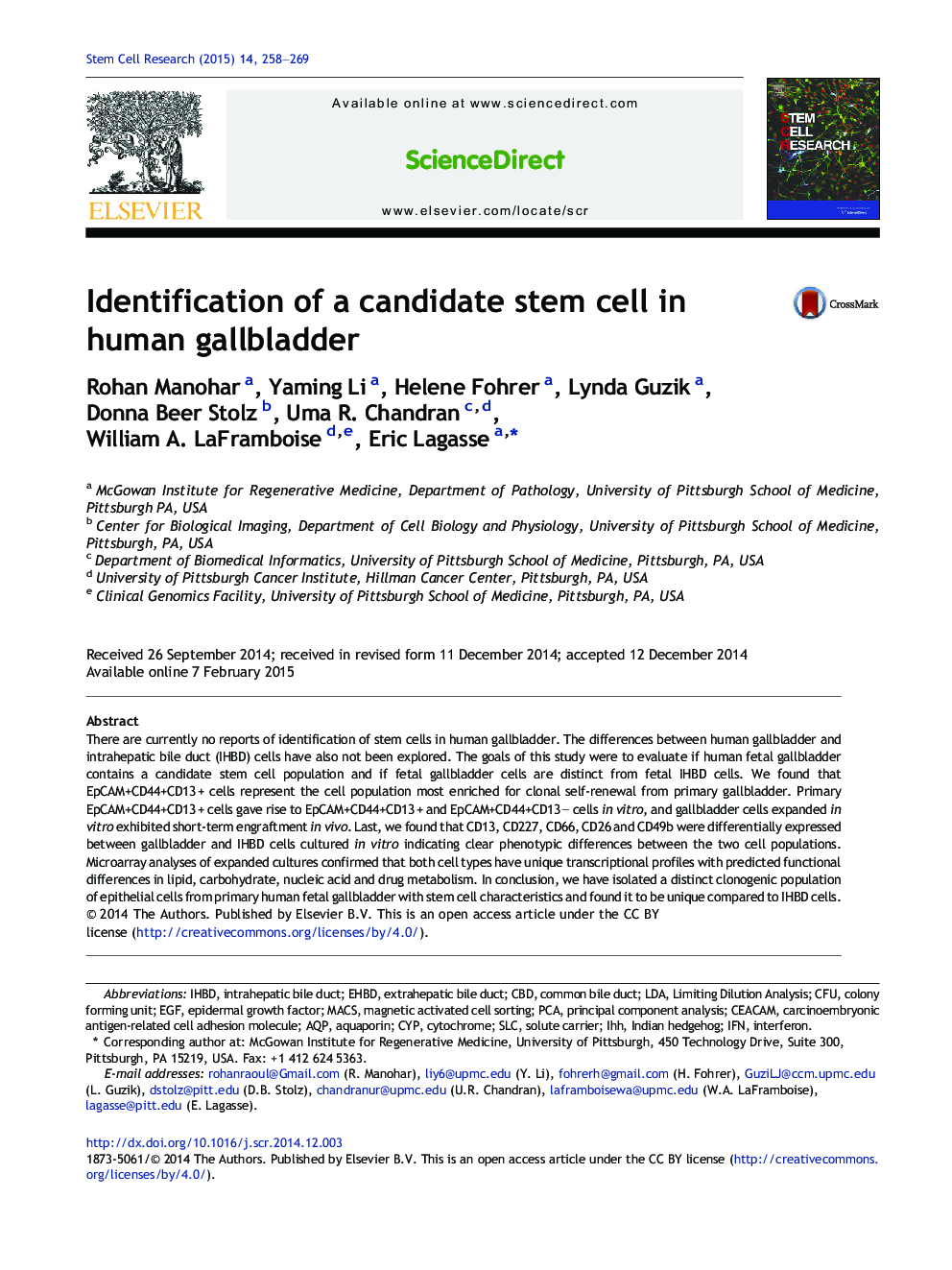| Article ID | Journal | Published Year | Pages | File Type |
|---|---|---|---|---|
| 2094184 | Stem Cell Research | 2015 | 12 Pages |
•EpCAM+CD44+CD13 + cells represent a clonogenic cell population in epithelial cells of primary human fetal gallbladder.•EpCAM+CD44+CD13 + gallbladder cells can self-renew and expand in vitro.•Gallbladder cells and intrahepatic bile duct cells expanded in vitro have unique gene expression signatures.
There are currently no reports of identification of stem cells in human gallbladder. The differences between human gallbladder and intrahepatic bile duct (IHBD) cells have also not been explored. The goals of this study were to evaluate if human fetal gallbladder contains a candidate stem cell population and if fetal gallbladder cells are distinct from fetal IHBD cells. We found that EpCAM+CD44+CD13 + cells represent the cell population most enriched for clonal self-renewal from primary gallbladder. Primary EpCAM+CD44+CD13 + cells gave rise to EpCAM+CD44+CD13 + and EpCAM+CD44+CD13 − cells in vitro, and gallbladder cells expanded in vitro exhibited short-term engraftment in vivo. Last, we found that CD13, CD227, CD66, CD26 and CD49b were differentially expressed between gallbladder and IHBD cells cultured in vitro indicating clear phenotypic differences between the two cell populations. Microarray analyses of expanded cultures confirmed that both cell types have unique transcriptional profiles with predicted functional differences in lipid, carbohydrate, nucleic acid and drug metabolism.In conclusion, we have isolated a distinct clonogenic population of epithelial cells from primary human fetal gallbladder with stem cell characteristics and found it to be unique compared to IHBD cells.
